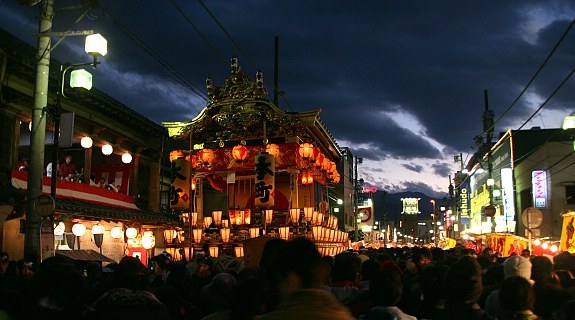In comparison to Western art, traditional Japanese art is very much a part of everyday life and beauty is found in simple, humble things.With its introduction by a traveler from the Asian continent in the 1500s the convention of the Japanese lantern continues today as a cultural icon. Starting with use in temples and marking holy grounds in carved stone lights, the paper lantern rapidly took precedence to became a household utility, surpassed only by employment of enterprising inn and shop keepers to advertise room vacancies and food items. The worldly use of stone lanterns evolved with the sacred tea ceremony. Today, the institution of the Japanese lantern use is an evolutionary mix of the paper orb lamp and the modern flashing lights in its cities.
Students will select 1 traditional japanese festival from 3 different traditional Japanese festivals, and research the cultural significance of the chosen festival. Students will choose from Nagasaki Kunchi, a festival held in Nagasaki, Japan where five to seven groups of performers perform each year, presenting traditional Japanese dances, Chinese influenced dragon dances or performances involving large floats, many of which are shaped like ships. The Kanto Matsuri--In this festival, the highlight of the festival is an impressive display of skill in which performers balance kanto, or long bamboo poles with arrays of paper lanterns attached to the end. And lastly, The Chichibu Night Festival is considered one of Japan's top three festivals to feature floats. Its floats are ornately decorated with lanterns, tapestries and gilded wood carvings and are accompanied by drum and flute music.
The objectives of the project are as follows:
1.
Students will observe traditional Japanese paintings
and be able to describe the aesthetics of simplicity, beauty and reverence for
nature.
2.
Students will choose patterns, design elements
and subject matter that relate to this historic culture for their own artworks.
3.
Students will create a free-standing 3-dimensional,
functional piece from a flat painting.
Resources:




